Pontefract
OS grid reference:- SE 455 215
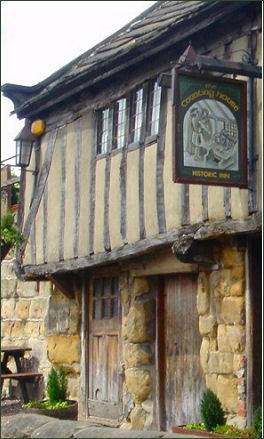 The historic market town of Pontefract is one of the 'Five Towns' in the district of Wakefield. Its name derives from the Latin words pons meaning 'bridge' and fractus which means 'broken'. Pontefract is not mentioned in the Domesday Survey of 1086, but was recorded as Pontefracto just four years later in 1090.
The historic market town of Pontefract is one of the 'Five Towns' in the district of Wakefield. Its name derives from the Latin words pons meaning 'bridge' and fractus which means 'broken'. Pontefract is not mentioned in the Domesday Survey of 1086, but was recorded as Pontefracto just four years later in 1090.
At the closing years of the eleventh century, Pontefract comprised of the two separate settlements of Tanshelf and Kirkby. In 1069, King William the Conqueror travelled north to Yorkshire in order to crush a rebellion against Norman rule which had sacked York. During his journey to York he found that the crossing of the River Aire at what is presently Pontefract had been blockaded by a group of local rebels, who had smashed the bridge and held the opposite bank. It is thought that Pontefract probably acquired its name directly through this event.
The ruins of Pontefract Castle stands on a rock to the east Pontefract above All Saints Church. Little survives today of what was once one of the mightiest and most feared castle in Yorkshire. Parts of the curtain wall can be seen and some of the excavated inner walls. Parts of Piper Tower's postern gate and the foundations of a chapel are the oldest remains. The ruins of the Round Tower or keep stand atop the eleventh century mound. Chambers excavated into the rock in the inner bailey possibly indicate the site of the old hall.
The castle has a long and bloody story and has featured many times in the history of the nation. Pontefract Castle was constructed in around 1070 by Ilbert de Lacy (died 1090). Initially it was a wooden structure which was eventually replaced with stone. Ilbert's son, Robert de Lacy, 2nd Baron of Pontefract, failed to support King Henry I during his power struggle with his older brother Robert Curthose, which resulted in the castle being confiscated from the de Lacy family.
Pontefract's location on deep sandy soil made it one of the few places throughout Britain where liquorice plants could be cultivated. The town has a liquorice-sweet industry; and the famous Pontefract Cakes are produced, though the liquorice plant itself is no longer grown there.
Ilbert de Lacy was granted the manor of Tateshale (Tanshelf) where he commenced the building of Pontefract Castle, which began life as a wooden motte and bailey castle, built before 1086 and later rebuilt in stone. The de Lacys inhabited the castle for more than two centuries and were holders of the castle and the Honour of Pontefract from 1067 until the death of Alice de Lacy in 1348.
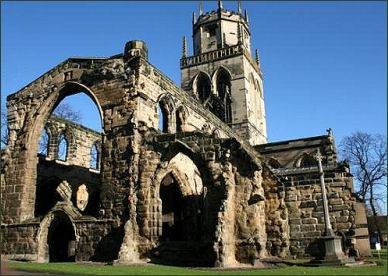 Pontefract has been a market town since the medieval era; market days are held on Wednesday and Saturday, with a smaller market on Fridays. The covered market is open all week, except Thursday afternoons and Sundays.
Pontefract has been a market town since the medieval era; market days are held on Wednesday and Saturday, with a smaller market on Fridays. The covered market is open all week, except Thursday afternoons and Sundays.
All Saint's Church, ( left) stands below the castle and was built around the 1300s, but only a few parts of that building have survived to the present day. In 1536 an uprising occured in the North known as the Pilgrimage of Grace, in opposition to Henry VIII's unpopular religious reforms. Many of the rebels travelled to Pontefract to establish themselves in the castle. The Archbishop of York was preaching in the church at Pontefract and preached moderation, his congregation dragged him from the pulpit and off to the castle.
During the Civil War Pontefract constantly changed from one side to the other and at one time the church was reported to have been hit over 60 times by cannon balls. During recent renovations one was didcovered still embedded in one of the walls. In December 1644 the parliamentarians attempted to oust the Royalist forces, who had held the Church. Fierce fighting took place in the church and churchyard and the Royalists eventually retreated to the castle.
Over the following few months several attempts were made to take the church, a total of 60, 181b cannon balls, were fired at the Church from Monkhill in one day alone. In June 1645 the Parliamentarians finally occupied the building and began to construct defensive siege works within the ruined building. They pillaged the lead, iron and wood. By 1649 the Church was in roofless ruin.
In 1831 Leeds architect R.D. Chantrell, was engaged to restore the Church. He blocked the west windows of the transepts and arcades, added an apse to the east, for the altar, which was mirrored to the west by the entrance porch which formed a polygon under the tower. The belfry was repaired and the clock faces added. In 1838 a separate parish of All Saints' was formed. Across the road from the present church stand the remains of an earlier Anglo-Saxon church and burial ground, dating from the seventh' century.
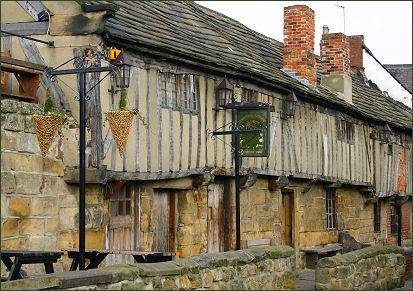 The town hall, located at the heart of the ancient historic town, dates to the eighteenth century by local surveyor Bernard Hartley. The Nelson Room contains a sculpture of Nelson's death scene onboard his ship the Victory. The Town Hall occupies the site of a Moot Hall built in 1656 and an earlier medieval building destroyed during the Civil War.
The town hall, located at the heart of the ancient historic town, dates to the eighteenth century by local surveyor Bernard Hartley. The Nelson Room contains a sculpture of Nelson's death scene onboard his ship the Victory. The Town Hall occupies the site of a Moot Hall built in 1656 and an earlier medieval building destroyed during the Civil War.
Pontefract Hermitage is a medieval building located 50 feet beneath the old Southgate entrance to the General Infirmary. The hermitage was discovered in October 1854 by workmen laying a new sewer. The retreat, which dates to 1386, comprises of two sandstone chambers on different levels. From the lower chamber a spiral staircase descends to a well.
The later upper chamber, known as the Oratory, has a domed ceiling. The Oratory contains an altar, a fireplace, a bench and low stool and a bed shelf. Pontefract had hermits from the early thirteenth century, the earliest of whom, Peter of Pomfret, who was according to Shakespeare was executed by King John in 1213 for predicting his downfall. The hermitage is open to the public on scheduled open days.
The Counting House is reputedly the oldest building in the town and dates back to the fourteenth century. It was a once merchant's counting house where they used to come and count the takings. The building was restored in the 1980s and is now a public house.
The Buttercross stands in Pontefract Market Place and dates back to 1734. It replaced St. Oswald’s Cross, which had occupied on the site since medieval times and which had been named after the Anglo-Saxon King of Northumbria, a popular saint in Yorkshire. St. Oswald’s Cross was demolished in 1734, and as the inscription on the south side states, the Buttercross was "Erected by Mrs Elizabeth Dupier, relict of Solomon Dupier, gentleman, in a cheerful and generous compliance with his benevolent intention, 1734"
St Giles church was built around 1106 although much of the fabric of the present building dates from the eighteenth century.

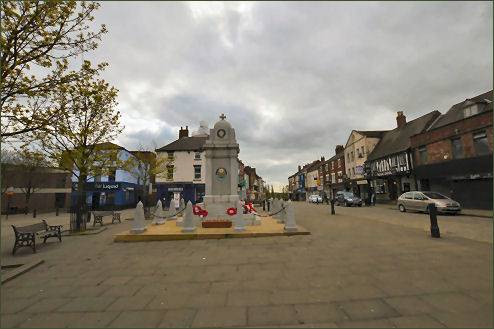
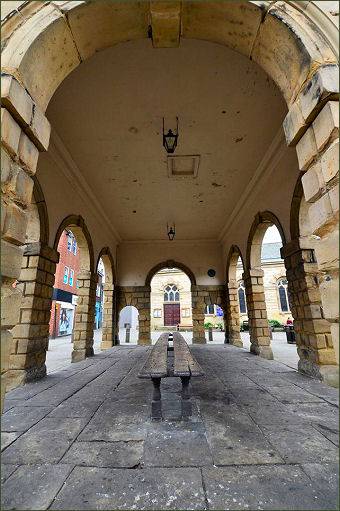
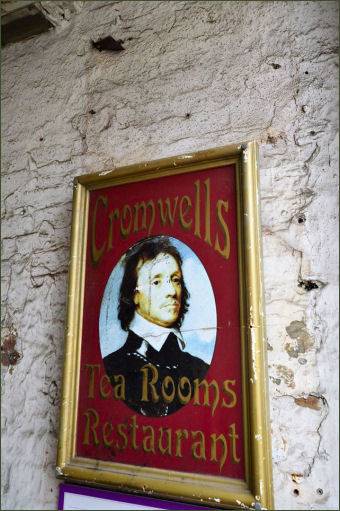
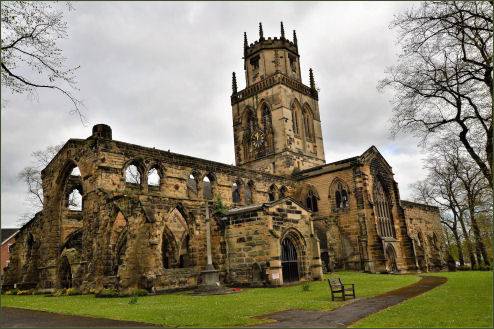

Images courtesy of Paul Johnson
Towns and Villages of Yorkshire
